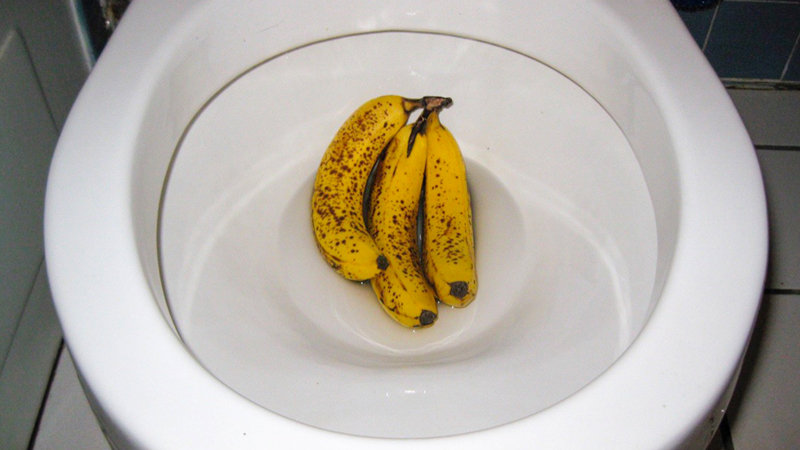Is it Sensible to Flush Food in the Toilet?
Is it Sensible to Flush Food in the Toilet?
Blog Article
We've uncovered this great article relating to Think Twice Before Flushing Food Down Your Toilet down the page on the internet and reckoned it made sense to talk about it with you here.

Introduction
Lots of people are commonly confronted with the dilemma of what to do with food waste, particularly when it pertains to leftovers or scraps. One usual concern that develops is whether it's all right to flush food down the bathroom. In this write-up, we'll delve into the reasons individuals might think about purging food, the consequences of doing so, and different techniques for appropriate disposal.
Reasons why people might consider purging food
Absence of understanding
Some people may not understand the possible harm triggered by purging food down the bathroom. They might mistakenly think that it's a harmless technique.
Ease
Purging food down the toilet might appear like a quick and easy option to taking care of undesirable scraps, specifically when there's no neighboring trash bin readily available.
Laziness
In many cases, people may merely pick to flush food out of sheer negligence, without thinking about the repercussions of their activities.
Repercussions of flushing food down the bathroom
Ecological impact
Food waste that winds up in rivers can add to pollution and harm marine ecological communities. In addition, the water utilized to flush food can stress water resources.
Pipes issues
Flushing food can lead to stopped up pipes and drains, creating costly plumbing fixings and hassles.
Sorts of food that should not be flushed
Coarse foods
Foods with fibrous textures such as celery or corn husks can obtain tangled in pipes and create obstructions.
Starchy foods
Starchy foods like pasta and rice can soak up water and swell, leading to blockages in pipelines.
Oils and fats
Greasy foods like bacon or food preparation oils must never be flushed down the bathroom as they can strengthen and cause clogs.
Appropriate disposal methods for food waste
Using a waste disposal unit
For homes furnished with waste disposal unit, food scraps can be ground up and purged through the pipes system. Nevertheless, not all foods appropriate for disposal in this manner.
Recycling
Specific food packaging products can be reused, reducing waste and reducing environmental influence.
Composting
Composting is an eco-friendly means to dispose of food waste. Organic materials can be composted and made use of to enrich soil for gardening.
The relevance of appropriate waste monitoring
Lowering environmental injury
Correct waste administration techniques, such as composting and recycling, aid lessen pollution and preserve natural deposits for future generations.
Safeguarding pipes systems
By avoiding the technique of flushing food down the bathroom, house owners can avoid pricey plumbing repair services and keep the honesty of their plumbing systems.
Conclusion
To conclude, while it may be appealing to flush food down the bathroom for ease, it is necessary to recognize the prospective effects of this activity. By adopting proper waste management methods and throwing away food waste responsibly, people can contribute to much healthier pipes systems and a cleaner atmosphere for all.
FLUSH FOOD DOWN THE TOILET?
FLUSHING FOOD CAN CAUSE BLOCKED DRAINS IN YOUR HOME
All of the plumbing fixtures in your home are connected to the same sewer pipe outside of your home. This outdoor sewer pipe is responsible for transporting all the wastewater from your home to the Council sewer mains. Even small pieces of food that go down the kitchen sink can cause problems for your sewer. It should therefore be obvious that flushing larger bits of food, such as meat, risks a clog in either the toilet itself or the sewer pipes. Flushing greasy food is even more problematic because oil coagulates when it cools, coating the interior lining of your pipes.
THE TOILET IS NOT A BIN
Food isn’t the only thing that people shouldn’t be flushing down the toilet. People use the toilet to dispose of all kinds of things such as tampons, makeup wipes, dental floss, kitty litter and even underwear. Water goes to great lengths to educate residents about the high costs and stress placed on wastewater treatment systems simply from people flushing the wrong stuff down the toilet. It costs taxpayers millions of dollars each year, and homeowners thousands in blocked drain repairs.
FLUSHING FOOD IS A WASTE OF WATER
Flushing food is a waste of our most precious resource - water. In June this year Level 1 water restrictions were introduced to protect water supply from drought conditions. Much of New South Wales continues to be affected by prolonged drought with recent figures revealing up to 97 per cent of the state remains in drought. Depending on whether you have a single or dual flush toilet, every single flush uses between five and 11 litres of water. In the current climate this is a huge amount of water to be wasting on flushing food that should be placed in the bin (or better yet, the compost).
https://www.jabplumbingsolutions.com.au/blog/can-you-flush-food-down-the-toilet

I have been very drawn to Is it safe to flush food (especially rice) down the toilet? and I'm hoping you enjoyed the entire entry. Enjoyed our blog entry? Please share it. Let other people discover it. We cherish your readership.
Get Quote Report this page